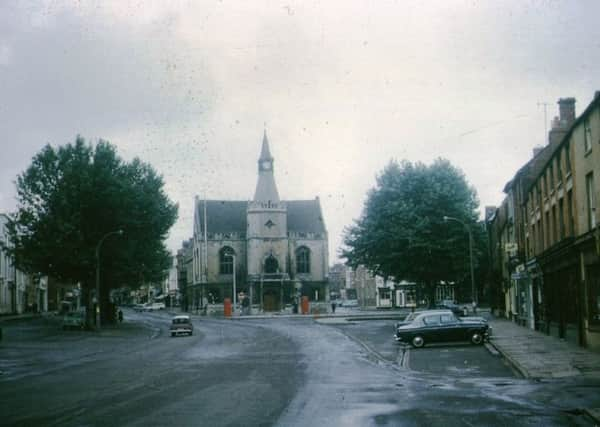LOOK BACK WITH LITTLE: Survey stirs thoughts of life before Castle Quay


The buildings were deemed to be the only ones with some historic value threatened with demolition. In the context of the town’s history this was a superb opportunity to focus on an important part of the post-medieval urban area.
The presence of notable people increased the significance of this still further. John Golby Rusher, printer and publisher of the Banbury lists and Thomas Staley, who dealt in coal and corn and was miller and mealman were members of the Paving and Lighting Commission established in 1825 that had responsibility for transforming the appearance of the borough. Rusher was also Mayor of Banbury 1835-36. Both men were connected with the triangular area formed by Bridge Street and Mill Lane, which significantly was located east of the market and west of the Oxford Canal. Its position near to the canal and later the railway meant it had always enjoyed good transport links. James Rusher owned 44 Bridge Street and lived there until he took over the family business in 1832 and moved to 31 Market Place and Thomas Staley of Banbury Mill was active in warehouse construction along Mill Lane and on the canal side.
Advertisement
Hide AdAdvertisement
Hide Ad44 Bridge Street had limited facilities and in 1826 J G Rusher acquired the retail property next door from the Town Corporation. The new shop built between 1769 and 1772 had the disadvantage of an irregular plot site that was further adversely affected when the Oxford Canal Company purchased and then demolished part of the Steam Packet public house to widen the approach to a wharf.
This was not the only building based on an irregular plan. No45 Bridge Street had to fit into the pre-existing pattern of buildings. Despite such site problems their location may well have been residentially attractive to the likes of small traders, servants and shop workers, who followed a well-established tradition of living above the shop. Additionally as indicated by 44 Bridge Street an added attraction was the use of locally made bricks to create properties with ‘town house character’.
In 1897 the London Tea Warehouse occupied the first floor and this benefitted from closeness to the market. A hundred years later the emphasis had changed to a ground floor car spares shop with a hairdressers business above.
A significant part of this Steve Litherland investigative appraisal was charting links between Mill Lane and Bridge Street frontages and especially how this was achieved by outbuildings. In the case of 46 Bridge Street, which dated from the late 18th century to early 19th century, he discovered that outbuildings were added later and linked to property on Mill Lane. These had gone by the time of the 1882 Ordnance Survey map of Banbury. However the squat building that faced Bridge Street persisted and by 1920 had been acquired by J. Wincott for tea rooms and a bakery that was a source of genuine Banbury Cakes.
Advertisement
Hide AdAdvertisement
Hide AdFurther along this line of development was three-storey 51 Bridge Street. The original shop front was Edwardian but as so often in this part of the town the property was made of a poorer quality ‘jerry’ brick. The building’s narrowness is thought to have been because of infill leading back to a court area.
Litherland’s study of Mill Lane revealed several public houses and a considerable quantity of warehousing, especially at the canal end. The Steam Packet and the Jolly Waterman would have served both canal folk and those connected with the street markets.
The survey commissioned by the shopping centre company concluded with the observation that this part of Banbury has great potential to answer important questions regarding the inter-relation of commercial, industrial distribution and service, and housing needs of the 19th century. As for the canalside pubs, they offer a colourful insight into the life of the Victorian town.